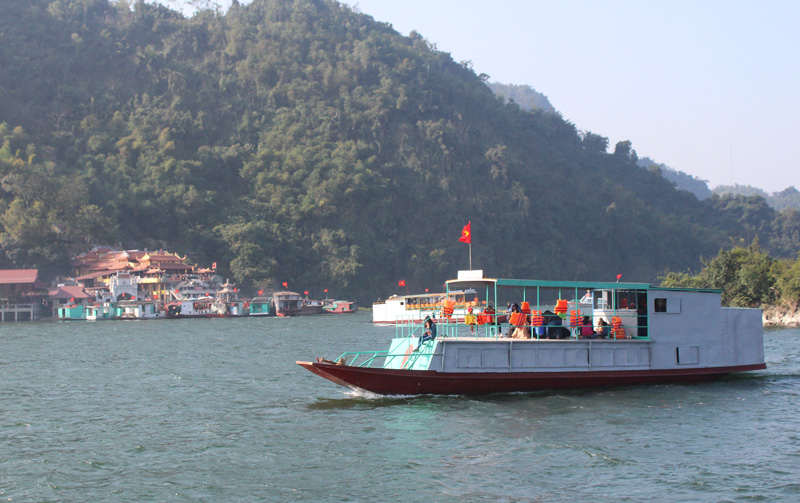
(HBO) – Hoa Binh province has what it takes to develop agri-tourism. The province is home to more than 88,400 hectares of agricultural land, including 4,700 hectares of citrus fruits, over 6,500 hectares of purple and green sugarcanes and 11,000 hectares of vegetables. It also has more than 4,700 cages of fish, mostly in the Hoa Binh Reservoir.
 Hoa Binh lake is a tourist destination.
Hoa Binh lake is a tourist destination.
Hoa
Binh is nationally renowned for a variety of agricultural specialties, such as
Cao Phong and Lac Thuy oranges, Tan Lac and Yen Thuy pomelos, Da River prawn
and fish, and purple sugarcane. Many orange farms in Cao Phong have strived to
make the most of their potential by combining agriculture and tourism.
It is
naturally blessed with scenic rolling limestone mountains and magnificent
caves, particularly Dau Rong caves and mountains in Cao Phong district, Tien
Pagoda’s caves in Lac Thuy district, Ngoi Hoa and Nam Son caves in Tan Lac district,
and Trung Son cave in Luong Son district; and a number of primitive tropical
forests as well as nature reserves, namely Pu Canh, Ngoc Son – Ngo Luong,
Thuong Tien, and Hang Kia – Pa Co.
The
popular Hoa Binh Reservoir, which has 47 islets and islands, is dubbed as Ha
Long Bay on land. It holds large potential for the locals to develop eco-tours
and adventure tours, most favoured by young people and foreign travelers.
The
province, which has a total population of 850,000, is one of the most
ethnically diverse province in Vietnam. It is inhabited by various ethnic
minority groups, such as Muong, Thai, Tay, Dao and Mong, which together account
for 74.31 percent of the population. The ethnic minorities have still preserved
centuries-old rich and distinctive cultures.
New
tourism services have been developed within small and cozy villages of local
ethnic minorities, attracting an increasing number of visitors, particularly
foreigners. Hoa Binh now has many well-known community-based villages and more
than 150 homestay facilities.
Hoa
Binh has also worked hard to maintain and restore traditional festivals of
ethnic minorities.
Fifty-seven
out of 131 communes in Hoa Binh have achieved new-style rural area status after
the new rural development programme was launched in the province 10 years ago.
Seven communes have meet advanced new-style rural area standards while 39
residential zones have been named as model ones.
The
province has been making all necessary steps for 58 local signature products to
be recognized as 3-star "One Commune, One Product” (OCOP) products, including
two in tourism./.
Hoa Binh has taken measures, focusing on removing barriers in terms of mechanism, policy, infrastructure, and upgrading technical infrastructure facilities serving tourism and the quality of human resources, to promote tourism development in the Hoa Binh Lake area.
Over the past time, Da Bac has deployed measures to lure more domestic and foreign visitors to the locality, aiming to turn tourism into the district’s economic spearhead.
Covering an area of over 52,000 hectares spanning districts of Mai Chau, Tan Lac, Cao Phong, Da Bac, and Hoa Binh City, Hoa Binh lake has strong potential for tourism development. In recent years, thanks to the attention of local Party Committees and authorities as well as support from international organisations, the advantages of tourism in the lake area have been utilised.
Mai Chau is a mountainous district and home to many ethnic groups such as Thai, Muong, Kinh, Mong, Dao, and Tay with distinctive cultural identities, creating a diverse and unique cultural treasure. Aware of its advantages, the district has paid attention to the preservation and promotion of ethnic groups’ cultural values so that culture will become a leverage for tourism and contribute to socio-economic development and life quality improvement.



 Hoa Binh lake is a tourist destination.
Hoa Binh lake is a tourist destination.